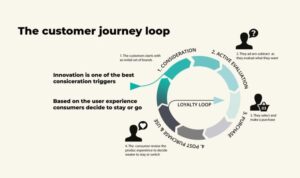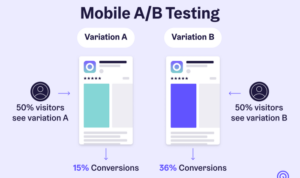Using Customer Data in Marketing sets the stage for this enthralling narrative, offering readers a glimpse into a story that is rich in detail with american high school hip style and brimming with originality from the outset.
Customer data is the secret sauce behind successful marketing campaigns, allowing businesses to tailor their strategies to individual preferences and behaviors. Dive into the world of using customer data to unlock the potential of personalized marketing campaigns.
Importance of Customer Data in Marketing: Using Customer Data In Marketing

Customer data is like gold in the world of marketing. It plays a crucial role in shaping marketing strategies, helping companies understand their target audience better and tailor their campaigns accordingly. By analyzing customer data, businesses can identify trends, preferences, and behaviors, allowing them to create more personalized and targeted marketing initiatives.
Creating Personalized Marketing Campaigns
Customer data enables companies to segment their audience based on various criteria such as demographics, behavior, and past interactions. This segmentation allows marketers to create personalized marketing campaigns that resonate with specific customer groups. For example, by analyzing purchase history, companies can send targeted promotions or recommendations to customers who have shown interest in certain products or services. This level of personalization not only increases customer engagement but also boosts conversion rates.
Successful Marketing Campaigns Driven by Customer Data
One prime example of a successful marketing campaign driven by customer data is Amazon’s recommendation system. By analyzing customer data such as browsing history and purchase behavior, Amazon provides personalized product recommendations to each user, increasing the likelihood of a purchase. Another example is Spotify’s personalized playlists, which are curated based on user listening habits and preferences. These examples demonstrate the power of customer data in creating highly effective marketing campaigns that deliver personalized experiences to customers.
Types of Customer Data Used in Marketing

Customer data is a crucial element in marketing strategies, providing valuable insights into consumer behavior and preferences. There are various types of customer data used for marketing purposes, each serving a specific role in targeting the right audience and tailoring campaigns effectively.
Demographic Data
Demographic data includes information such as age, gender, income, education level, occupation, and geographic location. This data helps marketers create targeted campaigns that resonate with specific groups of consumers. By understanding the demographic profile of their target audience, companies can personalize their messaging and offerings to better meet the needs and preferences of different customer segments.
Behavioral Data
Behavioral data tracks how customers interact with a brand, including their browsing history, purchase patterns, and engagement with marketing campaigns. This data provides insights into consumer preferences, interests, and intent, allowing marketers to personalize their messaging, recommend relevant products, and optimize the customer journey. By analyzing behavioral data, companies can make data-driven decisions to improve customer engagement and drive conversions.
Collecting Customer Data
When it comes to collecting customer data for marketing purposes, it is crucial to do so ethically and in compliance with data privacy regulations. By following best practices and optimizing data collection processes, businesses can ensure accurate and valuable information to enhance their marketing strategies.
Methods for Collecting Customer Data Ethically
- Implement clear and transparent data collection policies: Clearly communicate to customers how their data will be used and stored.
- Obtain explicit consent: Always seek permission from customers before collecting their data, especially sensitive information.
- Anonymize data when possible: Remove personally identifiable information to protect customer privacy.
- Regularly update privacy policies: Stay compliant with evolving regulations and keep customers informed.
Importance of Data Privacy and Compliance Regulations
- Data privacy builds trust: Respecting customer privacy helps build trust and loyalty with your audience.
- Compliance avoids legal issues: Following regulations protects your business from potential fines and legal consequences.
- Enhances brand reputation: Demonstrating a commitment to data privacy can improve your brand’s reputation in the eyes of customers.
Tips for Optimizing Data Collection Processes
- Streamline data collection forms: Keep forms concise and easy to fill out to encourage participation.
- Utilize technology: Implement tools and software to automate data collection processes and reduce errors.
- Regularly clean and update databases: Ensure data accuracy by regularly reviewing and updating customer information.
- Monitor data security: Protect customer data from breaches by implementing robust security measures.
Analyzing Customer Data
In the world of marketing, analyzing customer data is crucial for gaining valuable insights that can drive successful campaigns and strategies. By understanding customer behaviors, preferences, and trends, businesses can tailor their marketing efforts to effectively target their audience and increase conversion rates.
Process of Analyzing Customer Data
- Collect relevant customer data from various sources such as CRM systems, surveys, social media, website analytics, etc.
- Clean and organize the data to ensure accuracy and consistency.
- Utilize data analysis tools and technologies to identify patterns, trends, and correlations within the data.
- Generate reports and visualizations to interpret the data and extract actionable insights.
Tools and Technologies for Data Analysis in Marketing
- Customer Relationship Management (CRM) software
- Marketing automation platforms
- Data visualization tools like Tableau or Power BI
- Advanced analytics tools such as Google Analytics, Adobe Analytics, or IBM SPSS
Best Practices for Interpreting Customer Data Effectively, Using Customer Data in Marketing
- Focus on relevant KPIs (Key Performance Indicators) to measure the success of marketing campaigns.
- Segment customer data based on demographics, behavior, or preferences for targeted marketing strategies.
- Use A/B testing to compare different marketing approaches and optimize campaigns based on data-driven results.
- Regularly analyze and update customer data to stay informed about changing trends and behaviors.





